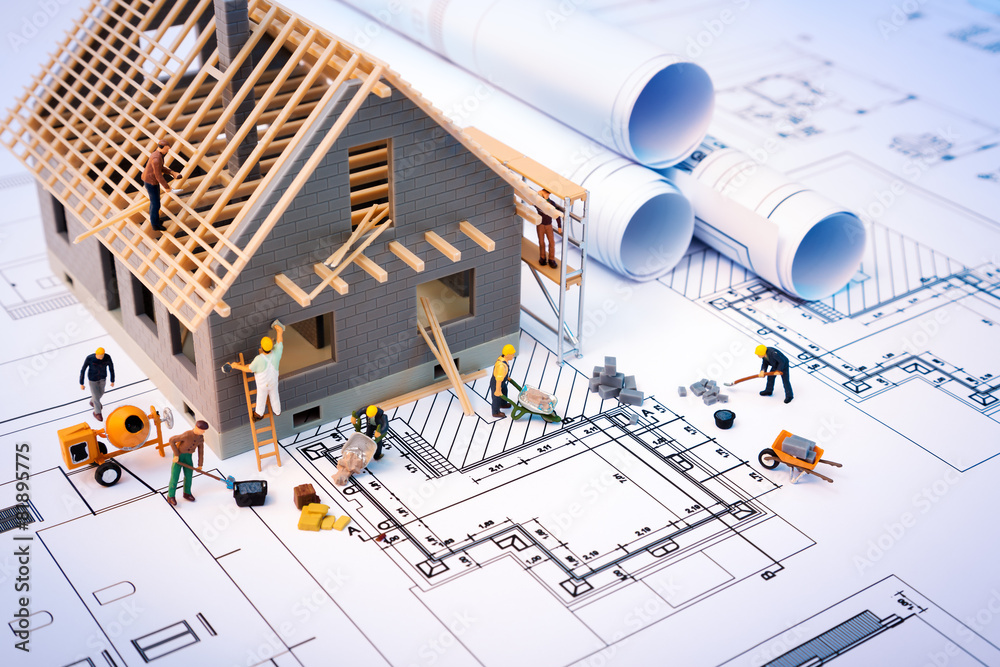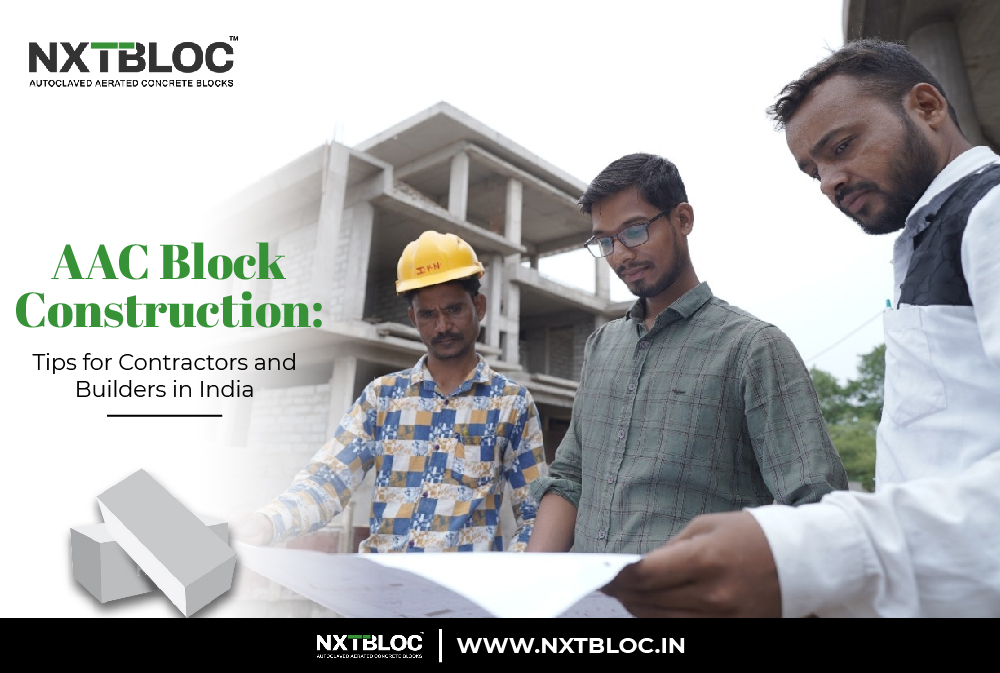The Rising Popularity of AAC Blocks in India
In the ever-evolving realm of construction materials, the ascent of AAC block construction (Autoclaved Aerated Concrete) is nothing short of meteoric. This rising star in the Indian construction industry among contractors and builders has garnered attention for its exceptional properties, reshaping the way we build structures. Understanding the journey and significance of AAC blocks is the first step towards revolutionizing the construction landscape.
Table of Contents
Importance of Quality AAC Blocks Construction
Before delving into the intricacies of AAC block construction, it’s essential to comprehend the significance of quality. Using AAC blocks isn’t just a trend; it’s a commitment to creating durable, sustainable, and aesthetically pleasing structures. Here, we explore the purpose of this blog, shedding light on how contractors and builders in India can embrace AAC blocks to achieve superior results.
I. Understanding AAC Blocks
* What Are AAC Blocks?
AAC blocks are a marvel of engineering, crafted from a mix of sand, cement, lime, and aluminum powder. The unique feature of these blocks is their cellular structure, achieved through a process of autoclaving. The result is a lightweight yet sturdy building material that combines the best of both worlds – strength and insulation.
* Composition and Manufacturing Process
To truly appreciate the excellence of AAC blocks, it’s imperative to understand their composition and manufacturing process. The combination of finely ground materials, precision curing, and the magic of autoclaving yields a product that stands out in the world of construction.
* Benefits of Using AAC Blocks in Construction
The advantages of AAC blocks are myriad. From enhanced thermal insulation to reduced structural weight, these blocks are a boon for builders in India. We explore these benefits in detail, painting a picture of why they are the go-to choice for modern construction.

* Types of AAC Blocks
Not all AAC blocks are created equal. Here, we discuss the various types available in the market, ranging from standard blocks to reinforced ones, each tailored to specific construction needs. The choice depends on the project’s requirements and the level of structural integrity desired by contractors and builders.
* Size and Shape Variations
Flexibility in design is key, and AAC blocks offer just that. They come in different sizes and shapes, allowing contractors and builders to unleash their creativity and craft structures that are both functional and visually appealing.
II. Pre-construction Planning
* Site Selection and Preparation
Choosing the right location and preparing the ground for AAC block construction is a critical step. It involves considerations like soil testing, which dictates the foundation requirements. We take an in-depth look at these aspects and how they impact the project.
* AAC Block Storage and Handling
The delicate nature of AAC blocks demands careful storage and handling. We elaborate on the do’s and don’ts, ensuring that these blocks retain their integrity until they become part of the structure.
* Designing with AAC Blocks
Designing with AAC blocks is an architect’s dream. This section delves into the various architectural and structural considerations when incorporating these blocks into your project. From load-bearing walls to façade elements, the possibilities are limitless.
* Customization and Aesthetics
One of the most exciting aspects of AAC block construction is the ability to customize. We explore the myriad ways in which aesthetics can be elevated, turning buildings into works of art while maintaining functionality.
III. Construction Techniques
* Laying AAC Blocks
The actual construction process involves the intricate art of laying AAC blocks. Precision and attention to detail are paramount. We break down the steps and techniques for successful block laying.
* Mortar Mixing and Application
Mortar is the glue that holds it all together. Discover the best practices for mixing and applying mortar to ensure a strong, lasting bond.
* Vertical and Horizontal Bonding
Effective bonding between blocks is essential for structural stability. This section discusses vertical and horizontal bonding techniques to guarantee a robust structure.
* Cutting and Shaping AAC Blocks
Customization often demands cutting and shaping AAC blocks. We explore the tools and methods needed to accomplish this with precision, ensuring every piece fits seamlessly.
* Ensuring Precise Fits
Attention to detail is the hallmark of quality construction. Learn how to guarantee precise fits, leaving no room for error in your project.

IV. Quality Control Measures
* Material Quality
The foundation of every construction project lies in the quality of its materials. We delve into what to look for in AAC blocks and how to ensure you’re working with the best.
* Selecting the Right AAC Blocks
Making the right choice can be the difference between success and failure. We provide guidance on selecting AAC blocks that align with your project’s requirements.
* Testing for Strength and Durability
Quality control doesn’t stop at material selection. Discover methods to test the strength and durability of the finished structure.
* Workmanship
The human element is critical in any construction project. This section highlights the significance of skilled labor and the need for proper training.
* Supervision and Inspection
Regular supervision and inspection are essential to maintain quality throughout the project. We discuss how to keep a keen eye on the construction process.
V. Building for Sustainability
* Energy Efficiency
AAC blocks are not only strong but also eco-friendly. Explore the energy efficiency and thermal insulation benefits that contribute to sustainable construction.
* Thermal Insulation Benefits
In a country with extreme climates, thermal insulation is a game-changer. We break down how AAC blocks help maintain comfortable indoor temperatures.
* Impact on HVAC Systems
Efficient thermal insulation has a direct impact on HVAC systems. Learn how using AAC blocks can lead to long-term energy savings.
* Environmental Considerations
Respecting the environment is imperative. Discover the eco-friendly aspects of AAC blocks, reducing the carbon footprint of your construction project.
* Recycling and Waste Management
Sustainability extends beyond construction. We discuss how to responsibly handle waste and potentially recycle AAC blocks at the end of their life cycle.
VI. Challenges and Solutions
* Common Challenges Faced by Contractors and Builders in India
No construction project is without challenges. We identify the common hurdles faced by contractors and builders in India working with AAC blocks.
* Thermal Cracking and Moisture Issues
Thermal cracking and moisture-related problems are unique to AAC blocks. Find solutions and best practices to mitigate these issues.
* Cost Considerations
Balancing quality and cost is always a challenge. Here, we explore strategies for managing thermal properties, budgeting effectively, and maintaining a cost-efficient approach.

VII. Compliance and Regulations
* Building Codes and AAC Block Usage
Compliance with building codes is non-negotiable. We guide you through the regulations related to AAC block usage and obtaining the necessary permits and approvals.
VIII. Maintenance and Longevity
* Post-construction Care for AAC Structures
The journey doesn’t end when construction does. Learn how to care for your AAC structure, ensuring it remains in optimal condition over the years.
* Extending the Lifespan of AAC Buildings
Discover strategies for extending the lifespan of your AAC buildings, making them a lasting legacy of quality construction.
IX. Conclusion
* Recap of Key Takeaways
In this concluding section, we revisit the key takeaways from each aspect of AAC block construction. It’s a final opportunity to grasp the essence of working with these exceptional building materials.
* Encouraging the Adoption of AAC Blocks in India’s Construction Industry
In conclusion, AAC blocks manufactured by NXTBLOC have rapidly transformed the construction landscape in India. By embracing the tips, techniques, and best practices outlined in this blog, contractors and builders in India can not only meet the industry’s evolving demands but also pave the way for a more sustainable and efficient future. The journey begins with understanding, and it’s up to the contractors and builders to shape it with precision and care.
